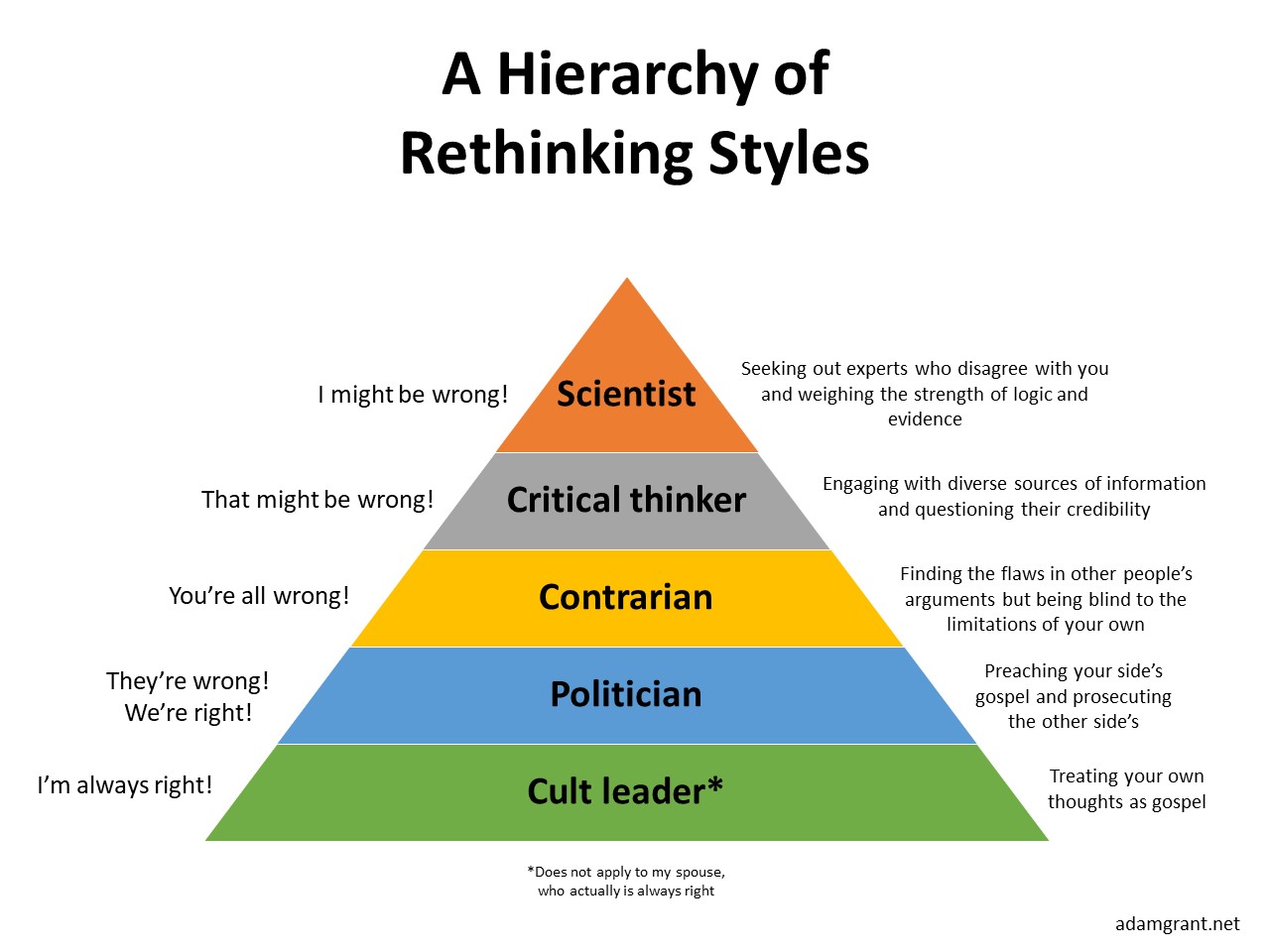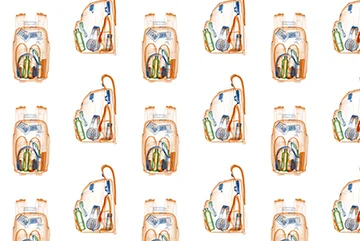Rethinking UX
Soumya Khedkar /
As the second wave of the pandemic hit India, I found myself picking up books that would give me the opportunity to get some perspective and recontextualise the constant changes happening all around. Adam Grant is an organisational psychologist whose work I admire and closely follow, through his books and his podcast, and I was delighted to hear that he released a book called ‘Think Again’ earlier this year. This book has been a timely release, addressing how choosing curiosity opens us up to a world of possibilities and updating our views can benefit us as much as updating our wardrobes does. These are some of the insights in the book that strongly resonated with me, which I think can be directly to the field of UX design (and more!)
1. Choose curiosity over conviction.
One of the themes that stuck with me through the book is that humans tend to favour the comfort of conviction over the discomfort of doubt. Grant says that we tend to listen to views that make us feel good, instead of ideas that make us think hard.
As UX designers, when approaching the user research process, we think we might have an idea of what the user thinks, needs and wants. If we hold on too tightly to those ideas, our research might be skewed towards what we want rather than what the user needs, and that could lead to poor UX. However, if a designer goes into the research process with a complete sense of curiosity, they might learn something about the user segment that they were completely blind to. What users say, do and what they say they do might be different, but all we can do is be open to learning and keep asking questions.
Psychologists call the clinging onto our knowledge and opinions the process of ‘seizing and freezing’, so it may be wise to defrost your beliefs before you start the UX process to create the best experience.
2. Think like a scientist.
Grant’s book focuses on how rethinking can take place on the individual, interpersonal and collective levels. On the individual level, he states that we tend to take on one of three modes – politician (campaigning for approval), prosecutor (crafting arguments to prove a point) and preacher (delivering sermons to protect our identities and values) – to defend our beliefs. The ideal approach, says Grant, is to take the one of a scientist – test a hypothesis, discover knowledge and search for the truth.

The UX process lends itself well to the scientific process, especially if your design team is curious. But the key to scientific thought is also humility. For a design process to be iterative and discovery-oriented, we need to recognise that the process of a scientist is cyclical and not linear. After we test a hypothesis and embrace the humility of being right or wrong, we might have to test a new one. Designers are as prone to confirmation and desirability biases as our users are, so a scientific mindset helps us embrace the cyclic approach more effectively.
3. Persuasion is about finding common ground
Grant addresses how the best debaters have two qualities that differentiate them from the good ones. Firstly, they find common ground with the opposing side. Secondly, they ask lots of questions.
In client interactions, UX designers might really have to fight for a certain design, approach or detail which is completely different from the expectations of a client. However, it is important to recognise that clients might operate from a different mindset but want to achieve the same business goals that you do. Give them credit for the pressure they’re under or the perspective that they have. Their expertise lies in their sector and their company, while yours lies in the field of design. That sense of credit improves the client relationship and acknowledges that you also have the right intention and that you care about the user and the client needs! Keep asking them questions if you disagree, you might find common ground even faster. Don’t be reactive or defensive.

Moreover, if you need to convince clients to use infinite scroll over pagination or push for user testing because of the complexity of an application, you should have an argument based on high-quality data. Even if you have three solid reasons why an approach is important, do your research on the behavioural science and psychology behind it or conduct a competitive analysis. Keep your argument strong and solid. Yet, keep an open mind that there are some insights that they might have in the industry through the experiential learning that their job provides. Take all perspectives into account.
4. Reconsider the best laid plans
As UX Designers, we have a long list of best practices that have been studied and defined over the years, informed by behavioural science, psychology and cognitive science. However, there are new issues and considerations that constantly emerge in this field. Coronavirus itself has been a challenge of rethinking our approach to almost everything! Most companies have moved to remote working and creating great virtual experiences has been a challenge.
When coronavirus hit, we needed to rethink our best laid plans, and if we made the effort to just stick to them, a new curveball would be thrown our way. Grant states that when we tend to dedicate ourselves to a plan and it doesn’t work, we tend to double down and sink more resources into it. This concept is called the ‘escalation of commitment’. Escalation of commitment is often used when we think about grit – the combination of passion and perseverance. However, sometimes when a plan isn’t working, rethinking is more important than pushing through it. Is this approach really working? Do we need to change this?
As designers in this pandemic era, we might have to rethink some of our best practices.
Some habit-forming frameworks that help users might not serve us in times like these, where our lives are lived through technology, and we need frequent breaks. We also simultaneously need to create space for mindful experiences through technology while approaching habit formation and keeping in mind the vision of our stakeholders.

After reading this book, one of the things I’m rethinking is how mental health can be taken into the UX process. How can I serve the needs of the client while recognising and protecting a user’s privacy? How can I ensure that an app creates a sense of achievement and creates a habit while ensuring a user’s mental health is not strongly impacted? Rethinking creates new opportunities and fuels the creative mindset that a great designer needs. Think Again is an important read in 2021 and beyond, to help us adapt to the constant change we’re seeing in the world around us.
References:
- Think Again, Adam Grant (2021)
Images:
- https://content.thriveglobal.com/wp-content/uploads/2017/09/Open-Minded-and-Close-Minded-People.png?w=1550
- https://www.adamgrant.net/
- https://www.flickr.com/photos/mustangjoe/5966894496
- https://twitter.com/lizandmollie/status/1084876645465350145





